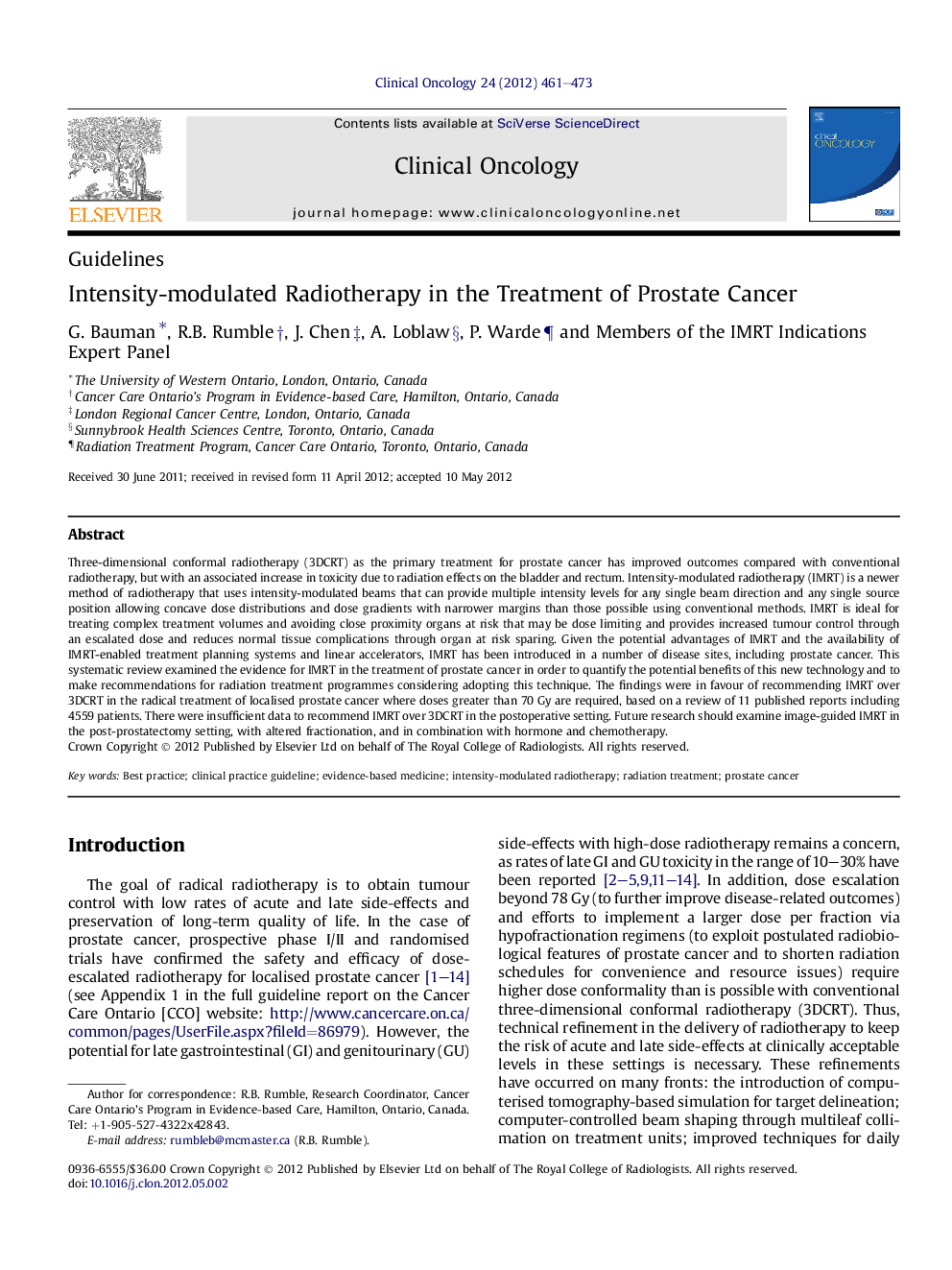| Article ID | Journal | Published Year | Pages | File Type |
|---|---|---|---|---|
| 5698569 | Clinical Oncology | 2012 | 13 Pages |
Abstract
Three-dimensional conformal radiotherapy (3DCRT) as the primary treatment for prostate cancer has improved outcomes compared with conventional radiotherapy, but with an associated increase in toxicity due to radiation effects on the bladder and rectum. Intensity-modulated radiotherapy (IMRT) is a newer method of radiotherapy that uses intensity-modulated beams that can provide multiple intensity levels for any single beam direction and any single source position allowing concave dose distributions and dose gradients with narrower margins than those possible using conventional methods. IMRT is ideal for treating complex treatment volumes and avoiding close proximity organs at risk that may be dose limiting and provides increased tumour control through an escalated dose and reduces normal tissue complications through organ at risk sparing. Given the potential advantages of IMRT and the availability of IMRT-enabled treatment planning systems and linear accelerators, IMRT has been introduced in a number of disease sites, including prostate cancer. This systematic review examined the evidence for IMRT in the treatment of prostate cancer in order to quantify the potential benefits of this new technology and to make recommendations for radiation treatment programmes considering adopting this technique. The findings were in favour of recommending IMRT over 3DCRT in the radical treatment of localised prostate cancer where doses greater than 70 Gy are required, based on a review of 11 published reports including 4559 patients. There were insufficient data to recommend IMRT over 3DCRT in the postoperative setting. Future research should examine image-guided IMRT in the post-prostatectomy setting, with altered fractionation, and in combination with hormone and chemotherapy.
Keywords
Related Topics
Health Sciences
Medicine and Dentistry
Oncology
Authors
G. Bauman, R.B. Rumble, J. Chen, A. Loblaw, P. Warde, Members of the IMRT Indications Expert Panel Members of the IMRT Indications Expert Panel,
